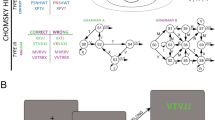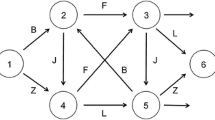Background
Artificial Neural Networks (ANNs) (Haykin, 1998) are universal function approximators (Hornik et al., 1989) with adaptive behaviour based on gradient descent in error space (Werbos, 1994) and other methods. These networks have been applied to a wide variety of problems from a broad range of domains that can be formulated as vectorto- vector mappings. That is, the function to be approximated must be represented as a function whose domain and whose range are given by two vector spaces (Figure 1). Many methods have been used to translate data into such spaces. A variety of interesting problems, including those that process measurements from a fixed set of sensors naturally lend themselves to vector representations.When data is not easily encoded in fixed-size vectors, a number of transformations of data have been proposed including padding the data, frequency space representations, windowing and others.
Access this chapter
Tax calculation will be finalised at checkout
Purchases are for personal use only
Preview
Unable to display preview. Download preview PDF.
Similar content being viewed by others
References
Anger, D.L., Foster, W.G.: The link between environmental toxicant exposure and endometriosis. Frontiers in bioscience: a journal and virtual library 1(13), 1578–1593 (2008)
bison, Bison - gnu parser generator (2008), http://www.gnu.org/software/bison/
Blair, R.M., Fang, H., Branham, W.S., Hass, B.S., Dial, S.L., Moland, C.L., Tong, W., Shi, L., Perkins, R., Sheehan, D.M.: The estrogen receptor relative binding affinities of 188 natural and xenochemicals: structural diversity of ligands. Toxicological Sciences 54(1), 138–153 (2000)
Branham, W.S., Dial, S.L., Moland, C.L., Hass, B.S., Blair, R.M., Fang, H., Shi, L., Tong, W., Perkins, R.G., Sheehan, D.M.: Phytoestrogen and mycoestrogen bind to the rat uterine estrogen receptor. Journal of Nutrition 132(4), 658–664 (2002)
Dalby, A., Nourse, J.G., Hounshell, W.D., Gushurst, A.K.I., Grier, D.L., Leland, B.A., Laufer, J.: Description of several chemical structure file formats used by computer programs developed at molecular design limited. Journal of chemical information and computer sciences 32(3), 244–255 (1992)
de, A., Barreto, G., Araújo, A.F.R., Kremer, S.C.: A taxonomy for spatiotemporal connectionist networks revisited: the unsupervised case. Neural Compututation 15(6), 1255–1320 (2003)
Fang, H., Tong, W.D., Branham, W.S., Moland, C.L., Dial, S.L., Hong, H.X., Xie, Q., Perkins, R., Owens, W., Sheehan, D.M.: Study of 202 natural, synthetic and environmental chemicals for binding to the androgen receptor. Chemical research in toxicology 16(10), 1338–1358 (2003)
flex (2008), flex - the fast lexical analyzer, http://flex.sourceforge.net/
Frasconi, P., Gori, M., Kuechler, A., Sperduti, A.: From sequences to data structures: Theory and applications. In: Kolen, J., Kremer, S. (eds.) A Field Guide to Dynamic Recurrent Networks, pp. 351–374. IEEE Computer Society Press, Los Alamitos (2001)
Fu, K.-S.: Syntactic Pattern Recognition and Applications. Longman Higher Education (1982)
GOLD Parsing System, Gold parsing system - a free, multi-programming language, parser generator (2008), http://www.devincook.com/goldparser/
Guha, R., Howard, M.T., Hutchison, G.R., Murray-Rust, P., Rzepa, H., Steinbeck, C., Wegner, J.K., Willighagen, E.: The blue obelisk – interoperability in chemical informatics. Journal of chemical information and modeling 46(3), 991–998 (2006)
Haykin, S.: Neural Networks: A Comprehensive Foundation, 2nd edn. Prentice-Hall, Englewood Cliffs (1998)
Hochreiter, S., Bengio, Y., Frasconi, P., Schmidhuber, J.: Gradient flow in recurrent nets: the difficulty of learning long-term dependencies. In: Kolen, J., Kremer, S. (eds.) A Field Guide to Dynamic Recurrent Networks, pp. 237–243. IEEE Computer Society Press, Los Alamitos (2001)
Hornik, K., Stinchcombe, M., White, H.: Multilayer feedforward networks are universal approximators. Neural Networks 2(5), 359–366 (1989)
James, C.A.: Opensmiles specification (2007), http://www.opensmiles.org/spec/open-smiles.html
Kolen, J.F., Kremer, S.C. (eds.): A Field Guide to Dynamical Recurrent Networks. Wiley-IEEE Press (2001)
Kremer, S.C.: On the computational power of Elman-style recurrent networks. IEEE Transactions on Neural Networks 6(4), 1000–1004 (1995)
Kremer, S.C.: Spatiotemporal connectionist networks: A taxonomy and review. Neural Computation 13(2), 249–306 (2001)
NCTR, Nctr center for toxicoinformatics - edkb home page(2007), http://www.fda.gov/nctr/science/centers/toxicoinformatics/edkb/index.htm
OpenBabel, The open babel package, version 2.1.1 (2008), http://www.openbabel.org
Rumberlhart, D., Hinton, G., Williams, R.: Chapter 9: Learning internal representation by error propagation. In: McClelland, J.L., Rumelhart, D., P.D.P. Group (eds.) Parallel Distributed Processing: Explorations in the Microstructure of Cognition. Foundations, vol. 1, MIT Press, Cambridge (1986)
Shi, L.M., Fang, H., Tong, W., Wu, J., Perkins, R., Blair, R.M., Branham, W.S., Dial, S.L., Moland, C.L., Sheehan, D.M.: Qsar models using a large diverse set of estrogens. Journal of Chemical Information and Computer Sciences 41(1), 186–195 (2001)
Stein, S.E., Heller, S.R., Tchekhovskoi, D.V.: The IUPAC Chemical Identifier Technical Manual. Gaithersburg, Maryland, USA (2006), http://old.iupac.org/inchi/download/index.html
Tong, W., Hong, H., Fang, H., Xie, Q., Perkins, R.: Decision forest: Combining the predictions of multiple independent decision tree models. Journal of Chemical Information and Computer Sciences 43(2), 525–531 (2003)
Werbos, P.J.: The roots of backpropagation: from ordered derivatives to neural networks and political forecasting. Wiley Interscience, New York (1994)
Editor information
Editors and Affiliations
Rights and permissions
Copyright information
© 2009 Springer-Verlag Berlin Heidelberg
About this chapter
Cite this chapter
Ma, E.Y.T., Kremer, S.C. (2009). Neural Grammar Networks. In: Bianchini, M., Maggini, M., Scarselli, F., Jain, L.C. (eds) Innovations in Neural Information Paradigms and Applications. Studies in Computational Intelligence, vol 247. Springer, Berlin, Heidelberg. https://doi.org/10.1007/978-3-642-04003-0_4
Download citation
DOI: https://doi.org/10.1007/978-3-642-04003-0_4
Publisher Name: Springer, Berlin, Heidelberg
Print ISBN: 978-3-642-04002-3
Online ISBN: 978-3-642-04003-0
eBook Packages: EngineeringEngineering (R0)




